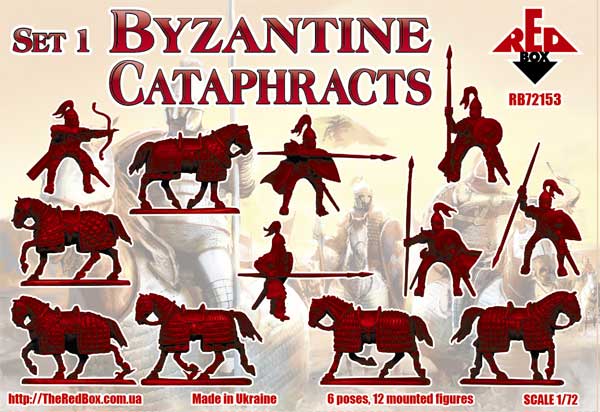Red Box 1/72 Byzantine Cataphracts Set 1 # 72153
Byzantine Cataphracts were elite, heavily armoured cavalry units of the Byzantine Empire, known for their formidable effectiveness in battle from the 6th to the 12th centuries.
These soldiers, derived from earlier Roman and Persian models, played a crucial role in Byzantine military strategy, excelling in shock combat and often serving as the decisive force on the battlefield.
Key Features:
Armour: Both horse and rider were extensively armoured. The cataphract wore chainmail or lamellar armour, with additional protective gear such as a helmet, greaves, and armguards. Their horses were often equipped with armour for the head and body.
Weapons: They typically wielded a long lance, known as a kontos or kontarion, used for powerful charges. Secondary weapons included swords, maces, and bows, allowing them versatility in combat.
Training and Tactics: Cataphracts were highly trained in mounted combat, capable of executing complex manoeuvres and formations. They were often used in wedge formations to break enemy lines or in encircling movements to flank and crush opponents.
Role and Impact: As a core component of the Byzantine military, cataphracts were pivotal in defending the empire’s borders and reclaiming lost territories. Their blend of heavy armour and mobility made them effective against both infantry and other cavalry, contributing significantly to Byzantine military successes.
Historical Significance:
Cataphracts represented a blend of Roman and Eastern cavalry traditions, embodying the synthesis of different military cultures within the Byzantine army.
Their prominence waned by the 12th century due to changing military tactics and the rise of new forms of cavalry, but their legacy influenced later medieval knights and heavy cavalry across Europe and the Near East.



















 Spread the cost with Paypal Credit
Spread the cost with Paypal Credit
 Spread the cost with Klarna
Spread the cost with Klarna










